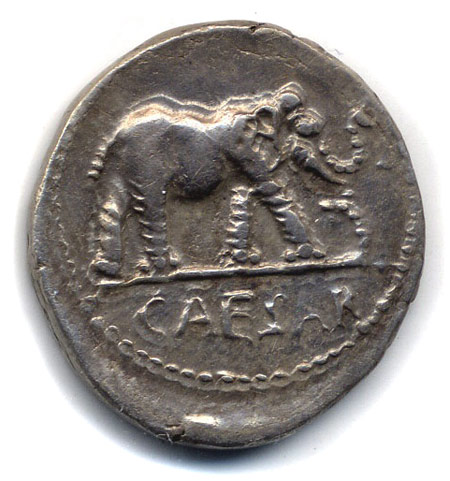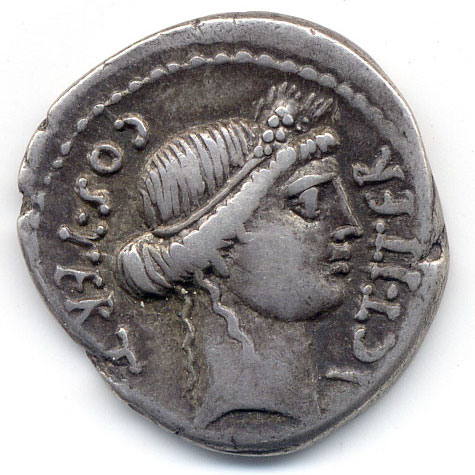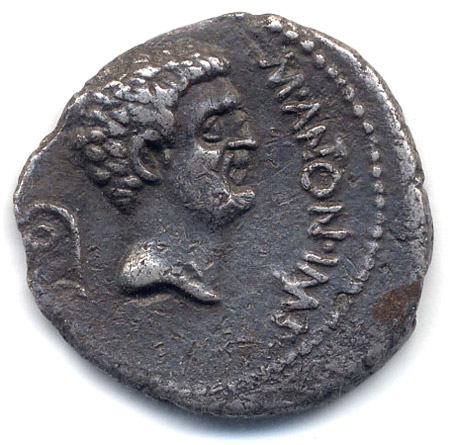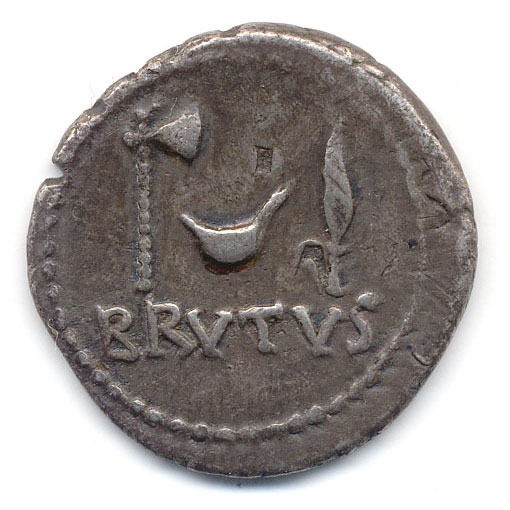Representing Power: Caesar's Use of Religious Imagery
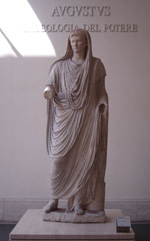
Roman coins depicted religious implements as symbols of religious offices. The jug and lituus symbolized the key functions of the two main colleges of religious offices, the pontifices and the augurs. The Pontifices and their leader the Pontifex Maximus had the important role of preparing the sacred wine for libations, as well as attending public vows and sacrifices to ensure that they were performed in accordance with traditional guidelines. The augurs took the auspices, which determined divine favour. Together these functions ensured the legitimacy of all political actions and the safety of the Roman state (Stewart: 1997:170).
Julius Caesar held many of the most important and influential priestly offices. He was elected the Flamen Dialis in 87 or 86 BC, a Pontifex in 73 BC, Pontifex Maximus in 63 BC and an Augur in 47 BC. Roman coinage did not have any traditional symbols to signify the highest religious office, that of the Pontifex Maximus, nor did it have a means of representing the combination of these offices (Morawiecki: 1996:47-8). Caesar, however, created a new coin type that focused solely on defining implements of these offices without any other imagery that would traditionally accompany them. On RRC 443 a culullus (ritual cup), aspergillum (sprinkler), axe & apex are depicted and on RRC 467 the culullus and aspergillum are accompanied by the jug and lituus. The accumulation of religious implements created a new iconographic design intended to signify Caesar's supreme authority.
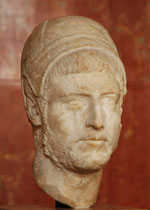
Caesar minted coins depicting religious imagery (RRC 443 minted in 49-8 BC and RRC 467 in 46 BC) while Rome was in the midst of civil war. He had illegally brought his army to Rome and assumed the role of dictator and consul. His political offices were gained illegally and with much bloodshed. Most of his religious offices however were acquired within the traditional framework. By using this new type he emphasised his religious authority, first as Pontifex Maximus and later as an Augur, an office which was traditionally linked with political legitimacy and the right of a commander to command his army. To further emphasise his authority he coupled his religious imagery with symbols of his military and political power. The obverse of RRC 443 depicts an elephant trampling a dragon, a traditional symbol of power. RRC 467 focuses on the accumulation of political and religious offices. The obverse depicts the goddess Ceres with the legend COS TER DICT ITER (consul for the third time, dictator for the second time) and the reverse shows a culullus, aspergillum, jug & lituus with the legend AVGVR PONT MAX (Augur Pontifex Maximus).
After Caesar's death many military commanders continued to use Caesar's coin type of religious implements in order to signify their legitimate authority as well to claim relationships with Caesar. RRC 488/1 has a double portrait of Antony with a lituus and Caesar with a jug. This coin was minted in 43 BC when Antony had received Macedonia as a province under a tribunician law which Brutus and the senatorial party (who held Macedonia) did not recognize as valid. By visibly linking himself with Caesar on his coin he indicated that he was the political heir of Caesar. The representation of religious symbols asserted the ritual and therefore legal authority of Antony's proconsulship. But it was not only the heirs of Caesar who took advantage of this new coin type to represent their authority when they were involved in civil war. M. Brutus and Lentulus Spinther jointly coined RRC 500/7: on the obverse is the legend BRVTVS and an axe, culullus and knife, and on the reverse LENTVLVS SPINT and a jug and lituus.

